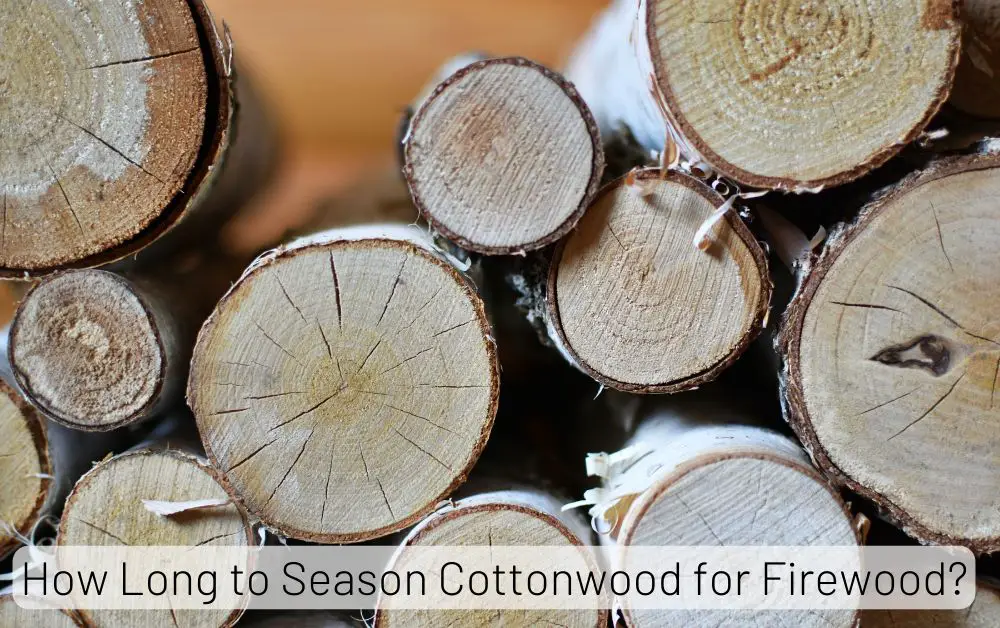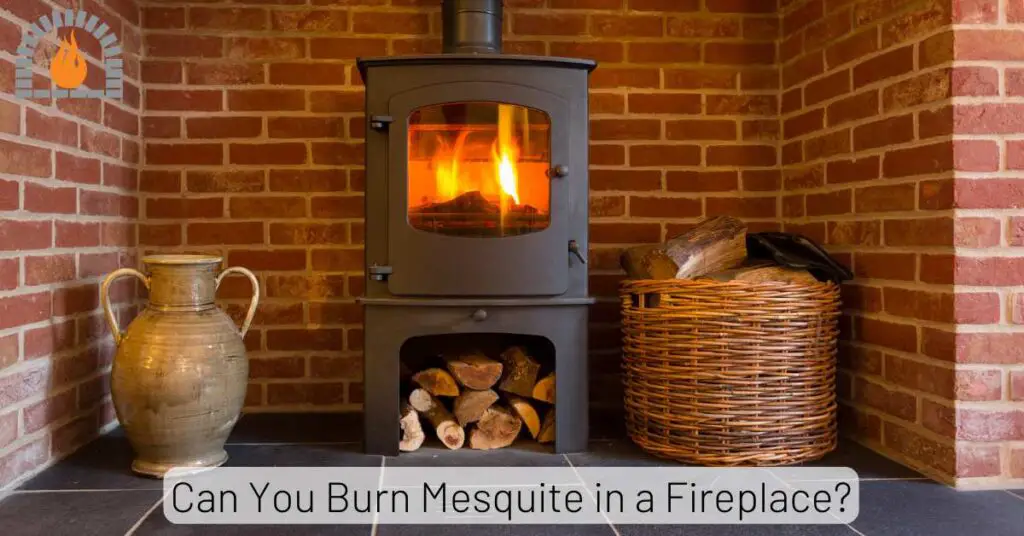Punky wood, also known as decayed or rotted wood, is characterized by its soft, spongy and crumbly texture. This type of wood often results from the natural decomposition process, making it less dense than its solid counterparts. So, is it safe to burn punky wood?
Caution: Some experts believe that burning punky, rotten woods can make you sick. Moldy wood can create toxic fumes when burned.
Overview
Can you burn punky wood? Yes, you can burn punky wood, but it may not be as efficient or produce as much heat as solid, well-seasoned wood. Burning punky wood may produce more smoke and residue, so it’s best suited for controlled outdoor settings like campfires or fire pits.
The Combustibility of Punky Wood
Contrary to popular belief, punky wood can be burned under the right conditions. The key lies in understanding its moisture content.
Freshly decayed wood tends to retain higher moisture levels, making it less ideal for burning. However, if the wood is sufficiently dry, it can contribute to a warm and efficient fire.
Can You Burn Punky Wood?
Punky wood can be used as firewood; however, due to the decomposition process, the BTU output, smoking, sparking, and seasoning characteristics may not be the same as those of other high-quality woods.
Rotting wood may produce more smoke, more sparks, and fewer flames and BTUs.
-
Moisture Content: Punky wood often has a higher moisture content due to decay. Burning wet wood can be inefficient and produce more smoke. It’s advisable to let punky wood dry out before burning to improve combustion.
-
Combustibility: The burnability of punky wood depends on the degree of decay. While highly decayed portions may not burn well, less decayed and denser wood parts can still be effective for burning.
-
Heat Output: Punky wood, being less dense than solid, well-seasoned wood, may produce less heat. This can affect its suitability for purposes such as heating.
-
Smoke and Residue: Burning punky wood may produce more smoke and residue than burning solid wood. This can lead to creosote accumulation in chimneys, posing a potential fire hazard.
-
Controlled Settings: Punky wood is better suited for controlled outdoor settings, such as campfires or fire pits. Using it in indoor stoves or fireplaces may not be as advisable due to increased smoke and residue.
-
Safety Measures: Exercise caution when burning wood, follow safety guidelines, and be aware of local regulations regarding outdoor burning. Proper disposal of ashes is essential to prevent accidents and ensure responsible burning practices.
How To Safely Burn Rotton Woods?
Avoid using wood that is completely disintegrated or excessively moist. Ensure the wood is still solid enough to maintain its structural integrity when placed in a fire.
It’s recommended to use rotten wood for outdoor fires rather than indoor fireplaces, as the wood tends to burn at lower temperatures.
Burning rotten wood indoors may release more moisture into the house and microorganisms involved in the decomposition process, making outdoor use a preferable option.
Pros of Punky Wood as Firewood
-
Readily Available: Punky wood is often easy to find in natural settings, such as forests or wooded areas.
-
Easy to Ignite: Rotted woods can ignite more easily than denser, solid wood due to its porous and partially decomposed nature.
-
Useful for Starting Fires: Spongy can be useful for starting fires, especially when combined with other types of firewood.
-
Ideal for Outdoor Settings: Suited for outdoor settings like campfires or fire pits, where its characteristics, such as increased smoke and sparks, maybe less of a concern.
Cons of Punky Wood as Firewood
-
Low BTU Output: Punky wood tends to have a lower energy content (measured in BTUs) than well-seasoned, solid wood, which may produce less heat.
-
High Moisture Content: The decomposition process often leads to higher moisture content, resulting in increased smoke and potential difficulties in burning efficiently.
-
Increased Smoke and Sparks: Burning old firewood can produce more smoke and sparks, which may be undesirable in certain situations, especially indoors.
-
Variable Burn Characteristics: The burnability of spongy wood can vary based on the degree of decay, making it less predictable in terms of flame production and burn duration.
-
Not Ideal for Indoor Use: Rotton wood is less suitable for indoor stoves or fireplaces due to increased smoke and the potential for residue.
-
Quick Burn: Burning old firewood may burn relatively quickly, requiring more frequent replenishment than denser, slower-burning woods.
Related Post: Can You Burn Lilac Wood?
How to Properly Burn Punky Wood.
-
Start by properly seasoning the punky wood. This involves allowing it to dry out in a well-ventilated area for an extended period. This ensures that the wood reaches an acceptable moisture level for efficient burning.
-
To enhance combustion and maintain a consistent heat output, consider mixing punky wood with solid, well-seasoned wood. This combination can provide a more controlled and prolonged burn.
-
Keep your firewood storage area well-maintained to prevent exposure to excessive moisture. Stacking wood off the ground and covering it with a tarp can go a long way in preserving its burnability.
Safety Considerations
- Avoid Moldy Wood: While punky wood can be burned if correctly seasoned, it’s crucial to distinguish between decayed wood and moldy wood. Moldy wood can release harmful spores when burned, posing health risks. Exercise caution and prioritize safety.
- Chimney Inspection: Regularly inspect and clean your chimney to prevent the buildup of creosote, which can be more common when burning punky wood. A clean chimney reduces the risk of chimney fires.
Related Post: Can You Burn Mesquite?
Is It Better To Burn Wood Or Let It Rot?
Burn Wood If:
- You need heat or energy.
- The wood is from sustainable sources.
- You have efficient burning methods.
Let Wood Rot If:
- You want to sequester carbon naturally.
- You aim to support local ecosystems.
- The wood is in a natural setting, not causing hazards.
What To Do With Rotten Firewood?
If you have rotten firewood and are not supposed to burn it, there are several eco-friendly and practical ways to make use of it or dispose of it:
- Composting:
- Shred or break the rotten firewood into smaller pieces.
- Mix it with other compostable materials like kitchen scraps, leaves, and grass clippings.
- Over time, the wood will break down and contribute to nutrient-rich compost.
- Mulching:
- If the wood is just a short distance away, you can use it as mulch in your garden.
- Spread the broken pieces around plants to help retain moisture, suppress weeds, and eventually break down into the soil.
- Landscaping:
- Arrange larger pieces of rotten wood in your garden or yard for a natural and rustic look.
- It can serve as a border for flower beds or pathways.
- Wildlife Habitat:
- Create a small pile of rotten wood in a quiet corner of your yard to provide a habitat for insects, fungi, and small animals.
- It can attract beneficial insects and contribute to the biodiversity of your garden.
- Hugelkultur Bed:
- If you have a larger quantity of rotten wood, consider creating a hugelkultur bed. This involves burying the wood in a trench or raised bed, covering it with soil, and planting on top. As the wood decomposes, it releases nutrients to benefit plant growth.
- Art and Craft Projects:
- Use the wood for art and craft projects. Rotten wood can have interesting textures and shapes that appeal to artistic endeavors.
- Dispose of Properly:
- If none of the above options are suitable, check with your local waste disposal facility or municipality for guidelines on disposing of rotten wood. Some places may accept it as yard waste.
Affiliate Disclosure: Fireplaceadviser.com is a participant in the Amazon Services LLC Associates Program. We may earn a commission when you click on certain links on this site and purchase.

Hello!! I am Jamal Khan. I often fix my home electric heaters and gas stove problems and research the common issues in the heating units to improve my knowledge and expertise. The aim of establishing fireplaceadviser.com is to share my expertise and knowledge with my audience.















